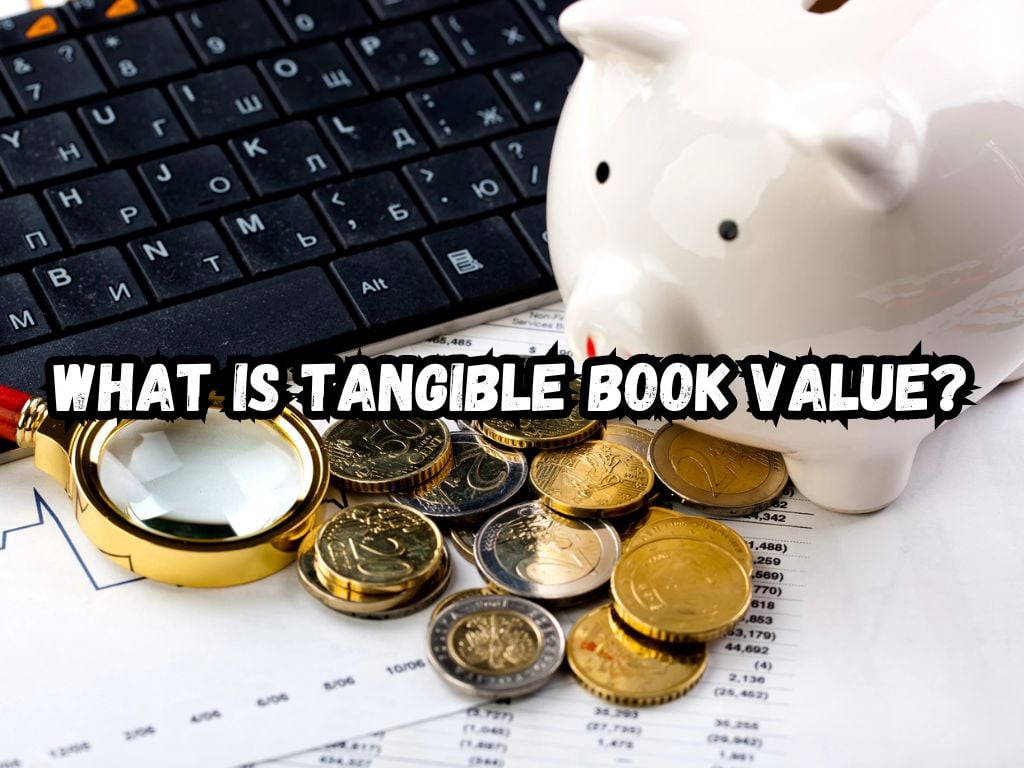In the realm of investment and finance, understanding the value of a company is crucial. One such metric, tangible book value (TBV), serves as a cornerstone for assessing a company’s financial health.
This article aims to unfold what is tangible book value, offering a clear view into its calculation, implications, and importance.
What is Tangible Book Value?
Tangible book value offers a snapshot of a company’s net asset value, excluding intangible assets like patents or goodwill. In simpler terms, it tells us what the company is worth if it were to liquidate its physical assets.
The formula to calculate TBV is straightforward: subtract liabilities and intangible assets from total assets.
To illustrate, consider a company with $500,000 in total assets, $200,000 in liabilities, and $50,000 in intangibles. The TBV here would be $500,000 – $200,000 – $50,000 = $250,000. This figure represents the company’s tangible net worth.
Tangible Book Value vs. Book Value
While TBV focuses on physical assets, book value encompasses all assets, including intangibles. The distinguishing factor is TBV’s emphasis on tangible, measurable goods. This distinction makes TBV a more conservative measure since it doesn’t speculate on the potential future worth of intangibles.

Importance of Tangible Book Value in Analysis
TBV plays a pivotal role in valuation exercises. For investors, it indicates the underlying value of a company’s assets, offering a safety net figure.
In stock valuation, TBV helps in identifying undervalued stocks, providing a benchmark beneath which a company’s stock price is deemed attractive.
Advantages of Using Tangible Book Value
Tangible Book Value (TBV) provides a reliable metric for investors seeking a conservative and straightforward valuation of a company’s net asset value. Here’s a detailed look at its advantages:
Conservative Estimation
TBV takes the company’s balance sheet and subtracts intangible assets, goodwill, and liabilities to derive the company’s inherent worth. This number represents the real, physical value of the company’s assets.
By focusing solely on tangible assets, TBV offers a conservative snapshot of a company’s value, which can be particularly reassuring in volatile markets or uncertain economic conditions.
Industry-Specific Relevance
In industries such as manufacturing, construction, and utilities, where physical assets play a central role, TBV is an especially pertinent metric.
These sectors require significant investments in property, machinery, and equipment, making TBV a more accurate reflection of the company’s value, compared to firms with substantial intangible assets, like technology or service-based companies.
Stability Against Market Volatility
Intangible assets, including brand value, intellectual property, and goodwill, can fluctuate widely with market perceptions, often leading to volatility in a company’s valuation.
TBV strips away this volatility by focusing on what is quantifiable and generally more stable—hard assets.
Thus, it acts as an anchor of stability in a company’s valuation, potentially serving as a bulwark against market irrationality or speculation.
Asset Liquidation Perspective
In the event of liquidation, TBV is particularly useful. It effectively provides a baseline estimate of the amount a company could be worth if it were to sell off all its tangible assets.
For creditors and investors, this figure is crucial; it indicates the potential recovery in a worst-case scenario, ensuring a clear-eyed understanding of the investment’s inherent risks.
Mitigating Overvaluation Risks
Finally, by excluding intangible assets, TBV reduces the risk of over-estimating a company’s value that can result from overvalued goodwill or overly optimistic projections of intangible asset profitability.
This makes TBV a critical tool for value investors who are looking for investment opportunities that the market may have overlooked or undervalued.

Limitations and Considerations
However, TBV isn’t without its limitations. In today’s economy, intangible assets can form a significant part of a company’s value.
Industries like tech or services, where intellectual property stands as a major asset, can appear undervalued if assessed solely through TBV. It’s crucial to understand that TBV’s relevance varies across different industry landscapes.
Real-world Application of TBV
Despite these limitations, TBV remains a critical tool in business valuations. For instance, in manufacturing or real estate, where physical assets are paramount, TBV offers a clear valuation base.
By examining case studies in these sectors, one can observe TBV’s utility in highlighting undervalued opportunities or financial stability.
Frequently Asked Questions
How to interpret TBV in a company’s balance sheet?
When you look at a balance sheet, locate the total assets and deduct liabilities and any intangible assets listed. A higher TBV suggests more underlying value, providing a buffer against financial instability.
Can TBV be applied to all sectors?
While universally applicable as a metric, TBV’s relevance shines in asset-heavy industries. For tech or service-oriented companies, augment TBV with other measures to gauge intangible value effectively.
How do intangible assets affect a company’s overall value?
Intangible assets can significantly boost a company’s market value. However, their worth is speculative and can fluctuate widely. TBV offers a grounding figure, but evaluating both tangible and intangible assets presents a full financial picture.
Conclusion
Tangible Book Value is an essential metric that provides a conservative snapshot of a company’s worth, focusing solely on its physical assets.
While especially pertinent in certain industries, its limitations in the digital economy call for a balanced approach, blending TBV with other valuation metrics.
For investors, understanding TBV is a step towards making informed decisions, pinpointing undervalued stocks, and assessing financial health with a clear, grounded perspective.
With its straightforward calculation and solid implications, TBV is an invaluable tool in the investor’s toolkit. However, navigating the broader financial landscape requires a nuanced approach, appreciating the tangible alongside the intangible to unlock a company’s true investment potential.


 Tags:
Tags:










